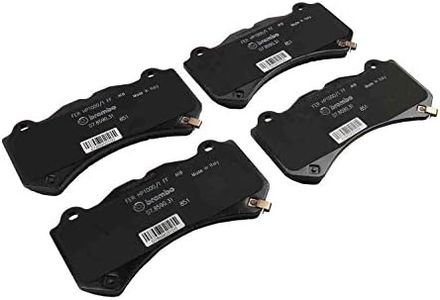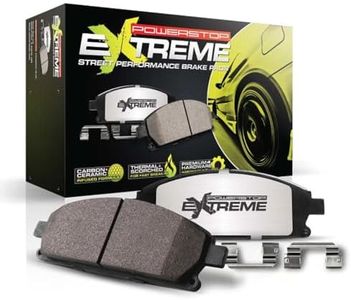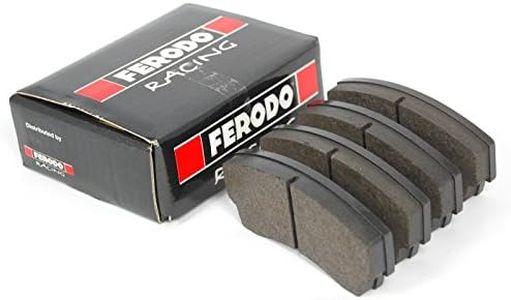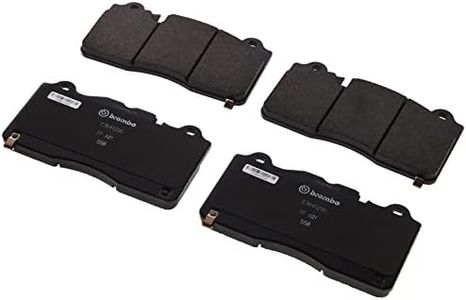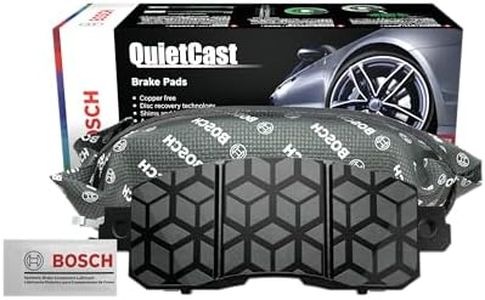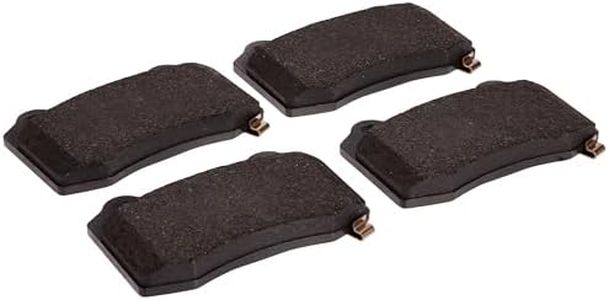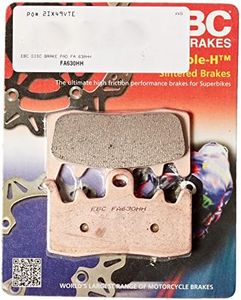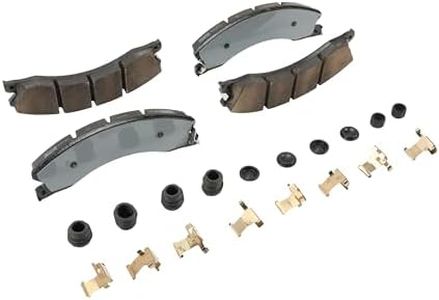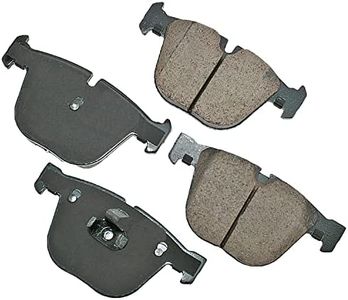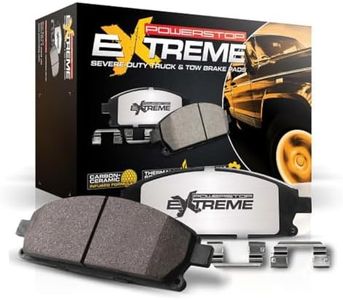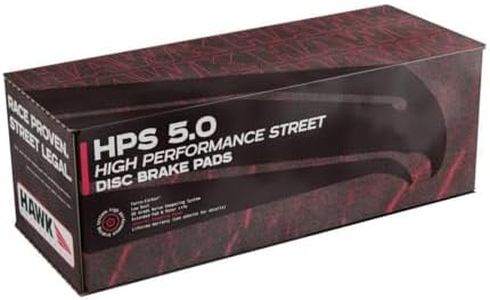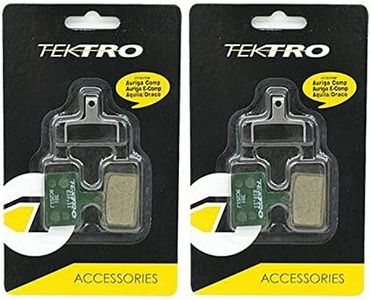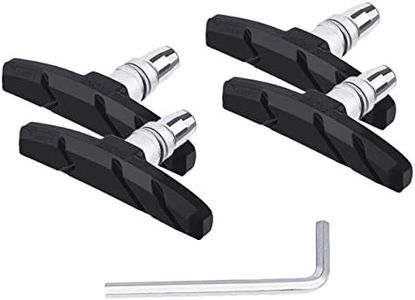We Use CookiesWe use cookies to enhance the security, performance,
functionality and for analytical and promotional activities. By continuing to browse this site you
are agreeing to our privacy policy
10 Best Brake Pads
From leading brands and best sellers available on the web.Buying Guide for the Best Brake Pads
Choosing the right brake pads is essential for both your safety and the performance of your vehicle. When shopping for brake pads, it's important to consider how and where you drive, as well as what kind of driving experience you want—whether it’s smooth and quiet or more performance-focused. Understanding the main features of brake pads will help you make an informed choice that matches your driving habits and vehicle needs.Material TypeThe material of the brake pad is critical because it affects the lifespan, braking power, noise, and dust produced by your brakes. Common materials include ceramic, semi-metallic, and organic (also known as non-asbestos organic or NAO). Ceramic pads are known for being quiet and producing less dust, making them ideal for daily driving in urban settings. Semi-metallic pads offer better performance and heat management, which is good for heavier vehicles or more demanding driving. Organic pads are softer and provide smooth, quiet braking, but they may wear out faster. To choose, think about whether you need durability, quiet operation, or performance in your daily driving.
CompatibilityCompatibility refers to whether the brake pad fits your specific vehicle model and braking system. This is essential because even the best brake pads won’t function properly if they aren’t designed for your vehicle. Brake pads are designed in various shapes and sizes for different makes and models, so always check your owner’s manual or existing pads for the right specifications before buying. Pick the one that matches your vehicle’s requirements exactly to ensure safe and optimal performance.
Brake Pad Performance (Friction Rating)The friction rating, sometimes labeled with letters like 'FF' or 'GG' on the pad, indicates how much stopping power the pad can deliver. Higher ratings mean better stopping performance, but this can also affect pad and rotor wear. If you do a lot of city driving with frequent stops, or carry heavy loads, look for higher friction ratings. For everyday driving at moderate speeds, a standard rating suffices.
Wear and LongevityWear and longevity describe how long a brake pad typically lasts under normal use. Harder compounds, like those in some ceramic and semi-metallic pads, can last longer, while softer organic pads may need more frequent replacement. If you drive often or in stop-and-go traffic, longer-lasting brake pads might be preferable. Consider your driving frequency and style to choose the best lifespan for your needs.
Noise and Dust LevelsSome brake pads are designed to minimize noise and dust, making them more comfortable for daily use and keeping wheels cleaner. Ceramic pads are known for being the quietest and produce the least dust, while semi-metallic and organic pads may generate more noise and visible dust. If a quiet ride and clean wheels are important to you, prioritize pads advertised as low-noise or low-dust.
Operating Temperature RangeThe operating temperature range tells you how well a brake pad performs under different heat conditions. High-performance or semi-metallic pads work well at higher temperatures and suit spirited or heavy-duty driving, while ceramic and organic pads are usually optimized for normal temperature ranges and everyday use. Matching the temperature range to your driving—normal daily commuting or more aggressive driving—ensures consistent performance and safety.
